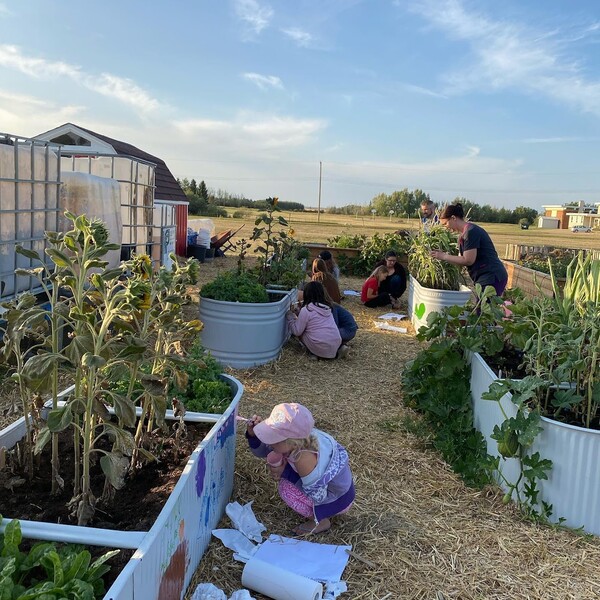Stewardship Showcase: In It for the Long Haul

Building and sustaining an edible forest.
No two Watershed Stewardship Grant projects look the same. Different groups are confronting different challenges in their ecosystem. Some, like the Round Hill Renaissance Agriculture Foundation’s (RHRAF) food forest, address challenges in the community as well as the environment.
The RHRAF’s food forest project developed from a community garden which started as a way to boost enrollment at the local school, by offering hands-on agricultural education. Leasing an empty plot of land from the county, the RHRAF got to work, establishing the food forest that would educate and feed students, and make better use of the land.
What is a food forest? It’s a sustainable ecosystem that mimics the structure of a natural forest, but with a focus on plants that produce food. Herbs, fruits and vegetables are all grown here. While traditional agriculture usually relies on monoculture, food forests are diverse and self-sustaining. Mixing perennial plants, shrubs and trees, the food forest creates a biodiverse ecosystem.
With the support of the Land Stewardship Centre and the Watershed Stewardship Grant, the RHRAF was able to work with a consultant to plan their forest, but the majority of the grant went towards purchasing fruit and shelterbelt trees.
The RHRAF’s foodscape (or edible landscape) offers opportunities to teach students all kinds of skills and knowledge. By planting native species, including those historically used for food and medicine by Indigenous peoples, local students learn more about Indigenous ecology and plant uses.
By seeing where their food comes from, and getting their hands in the soil themselves, the agricultural curriculum fosters appreciation for where their food comes from and what it takes to grow it.
“They’re growing microgreens and using them in the school breakfast program,” says Nicola Irving, president of the RHRAF. “It’s a simple thing, but the kids are so excited to grow and eat the food.”
The food forest has become a community project, not only attracting school groups, but also RHRAF-hosted field trips and workshops.
“We’ve had open farm days and we’ve built space so the community can gather there. It’s just a lovely place to be,” adds Nicola.
Nicola goes on to say the project was a bit of an experiment for the school board. But they’ve been really happy with it and so has the school board.
What’s next? It might be better to ask, what isn’t next? The RHRAF is hoping to expand their educational space with an outdoor shelter space and begin working with post-secondary students. That’s in addition to expanding the forest’s capabilities and enhancing rainwater capture.
“We’re always scheming and planning something new,” Nicola adds.
Forests aren’t built in a day – it will be years before some of these trees provide shade or produce some fruits. But thinking about where the forest could be in five or ten years makes the project all the more rewarding.
“This is not an overnight thing, growing trees. It's a long-term project,” Nicola said.


Leave a comment